My husband frequently chides me for not editing tightly enough, of hanging on to image files that I “will never use and never show.”
There is some truth to this. I have no problem doing the first pass, throwing out clear mistakes and duplicates. After that, it gets a LOT tougher. Part of the problem is some files are building blocks for a future image and I can’t know what their full potential is until I play around with them and process them.
Using new tools
Earlier this summer, we went to a nearby beach in the afternoon to shoot. Because it was a gray and cloudy day during San Diego’s annual “June gloom,” we could shoot in the middle of the afternoon without harsh shadows.
I had a new tool I needed to become familiar with, a Breakthrough Filters 6-stop neutral density (ND) filter. Slowing down the exposure and smoothing the ocean would highlight an interesting rock formation at the beach. The exposure would be long enough that surfers in the water would be blurred out.
My first order of business was to figure out the base exposure, before slowing the shutter speed down with the addition of an ND filter. This is what I started with:
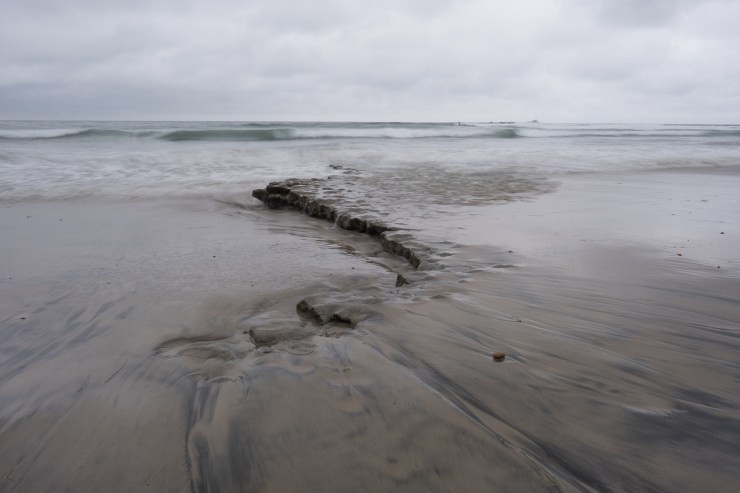
I quickly discovered 6-stops wasn’t enough. Luckily, Steve was shooting nearby and lent me his to use in addition. Mine is circular, 77mm and screws onto the front of a lens. In this case, I was shooting with the Fujifilm X-T2, paired with XF 16 mm F1.4 WR lens. His Nisi 3-stop ND filter is a huge rectangular filter, which I had to handhold in front of my 6-stop filter.
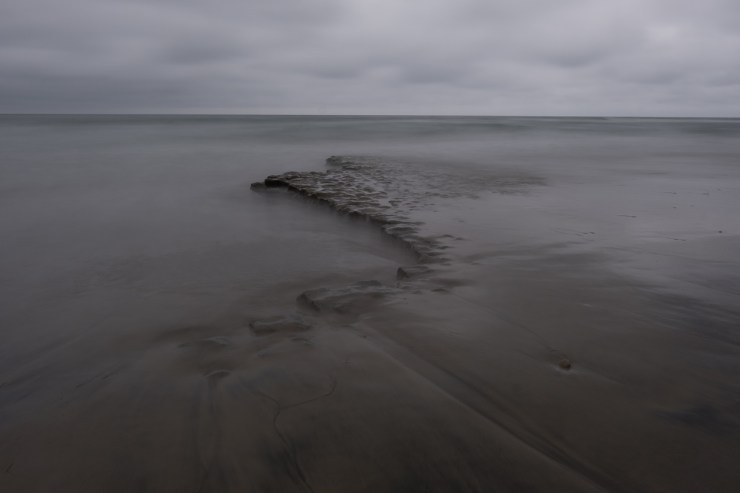
Different compositions
I tried a few variations in composition, including this vertical:
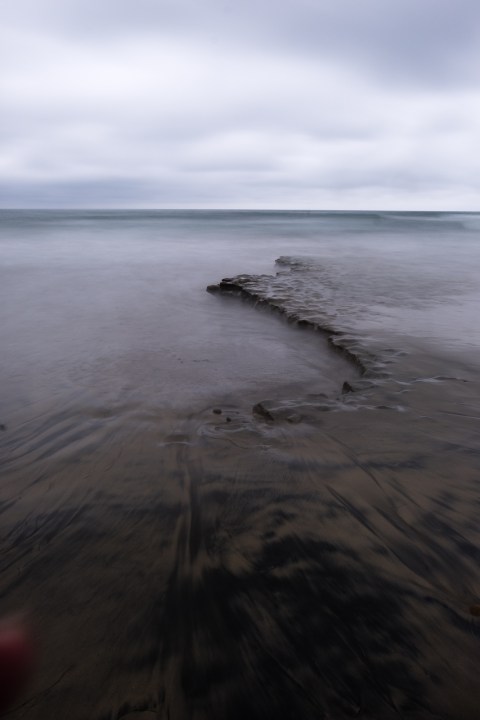
Those Nisi filters may be big, but they are designed to be used with a holder and not to be hand-held, however gingerly, by the edges. A square crop tightened the composition, focusing on the attractive S-curve in the center.
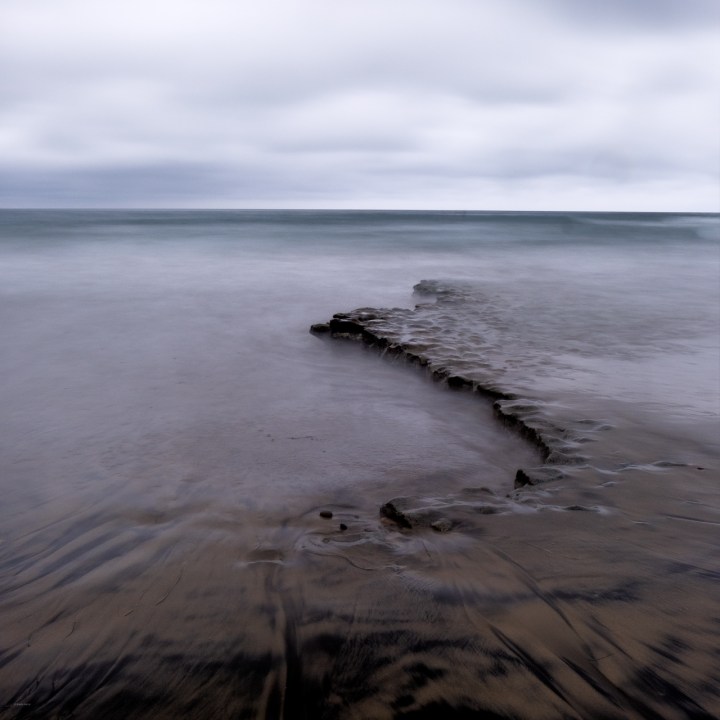
I liked the leading lines formed by the striations in the sand, the sinuous S-curve of the rock and sand interface and the moodiness of the sky. The color was pleasant if a little monastic and subdued.
Other options for the original files
What if I turned this into a monochrome version? Using DxO Labs Nik Collection Silver Efex Pro 2, one can quickly try on a variety of black and white looks for an image. My final version, with which I was pleased, has a dreamy quality of shimmery sand fusing into a limpid ocean.
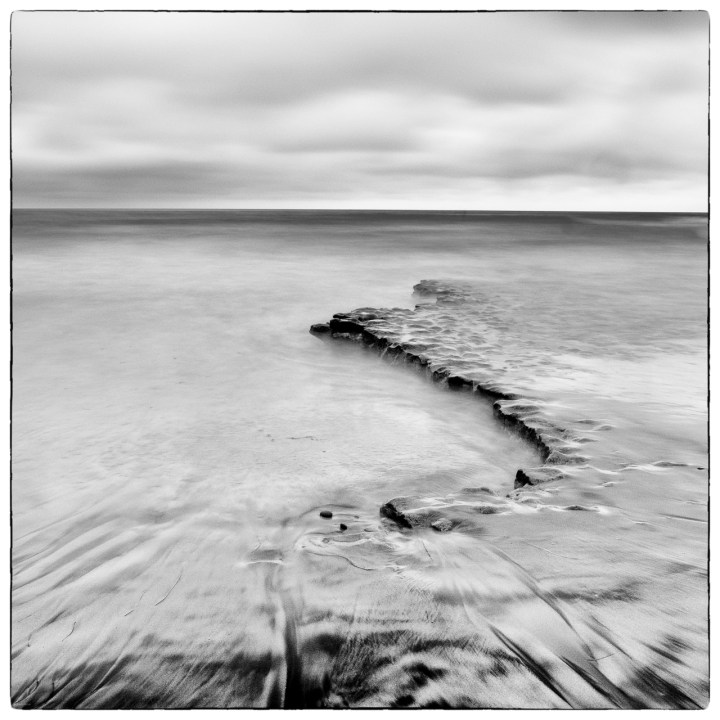
Without processing the image to this point, it is hard to predict what is a keeper and what isn’t. So, I continue to hang on to files I may never use, or show, at least until I have given them a proper opportunity to shine.
Tell your story with the second annual Visual Storytelling Conference!
Experience four days of interactive, online training sessions featuring a range of educational content with experienced photographers and content creators. This free event kicks off with a series of technical boot camps to build essential skills, followed by live, online sessions on photography, video, business and social media. Join live from March 10-13, 2022!
